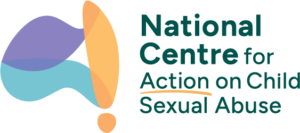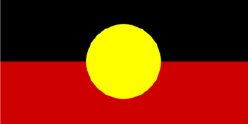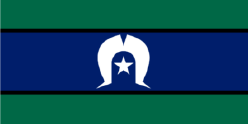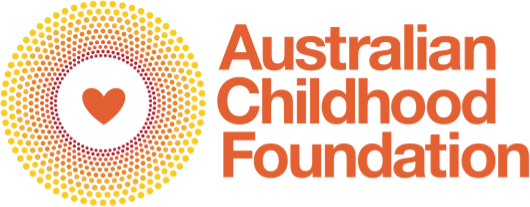Preventing child sexual abuse is one of the most complex social challenges we face. Like a puzzle, the solution requires carefully assembling many pieces, each essential to prevention. Yet as we heard again on the National Centre’s recent In Conversation webinar, “What do we know about the drivers of child sexual abuse and how do these inform prevention efforts”, there has been a focus on just a fraction or part of the puzzle – primarily treating child sexual abuse as a criminal justice problem that reacts after abuse has occurred.
During the discussion we heard that while there are promising prevention efforts happening in some communities, schools and organisations, these efforts are often fragmented, underfunded and unable to create widespread change. There is a need for a collaborative, multifaceted, proactive approach that builds on these promising practices.
Below captures the key insights from the In Conversation, identifying seven critical pieces of the child sexual abuse prevention puzzle and how they fit together to create a safer future for children.
1. Changing Community Norms
Child sexual abuse is deeply intertwined with cultural beliefs and societal norms that allow abuse to persist. The silence, stigma and shame surrounding child sexual abuse act as barriers to prevention by making it difficult for victims and survivors to speak out and for communities to engage in open conversations about the problem.
Taboos about child sexual abuse can prevent discussions that are critical to stopping abuse before it starts. Despite some progress, there remains widespread discomfort around this topic. The Community Attitudes Study (2024) highlights a significant gap in conversations about child sexual abuse:
- 62% of participants believed they knew someone who had been sexually abused as a child, yet only 9% had been directly informed by a child about being sexually abused.
- One in three adults felt “not at all” confident about how to talk to the parent or carer of a child they suspected had been sexually abused. Additionally, 28% felt “not at all” confident about initiating a conversation with the child they suspected had been sexually abused.
This lack of confidence and awareness highlights the urgent need to change social norms. We must make uncomfortable conversations about sex and safety a regular part of life for both adults and children. This involves creating an environment where discussing sex education is free from embarrassment or shame. By normalising these discussions, we empower everyone to talk openly about grooming and abuse risks, ensuring children feel safe to ask questions and report concerns without fear.
Changing social norms requires consistent, collective efforts such as education, open dialogue and community support. It begins with each of us initiating uncomfortable conversations that gradually become routine.
2. Strengthening systems
The systems that are designed to protect children – whether in education, health, or justice – often operate in isolation. When these systems fail to communicate or coordinate, gaps appear, and children fall through them.
Kelly Humphries, a survivor and advocate, highlights the deep distrust many victims and survivors feel toward these systems.
“…survivors feel like they cannot trust systems, therefore they won’t respond, and they’re going to be sitting there in silence, holding on to their stories…”
This silence perpetuates cycles of harm, as individuals who feel unsupported are less likely to come forward, report abuse, or seek help.
Rebuilding trust within these systems is essential. We must move from a reactive, after-the-fact criminal justice model to one that centres on holistic, proactive efforts. Trust is rebuilt by creating systems that listen to children, and foster agency and choice. This shift requires collaboration and an integrated response that ensures the system works together, preventing abuse before it happens and supporting victims and survivors from the moment they seek help.
3. Reframing prevention efforts through a public health lens
We know that the criminal justice system cannot prevent child sexual abuse. We need to reframe prevention through a public health lens – one that intervenes before abuse occurs.
The public health approach to child sexual abuse prevention addresses abuse at multiple levels through education, early intervention and ongoing support. While some public health initiatives, such as Protective Behaviour Programs, show promise in preventing child sexual abuse, these efforts need to be expanded and integrated into a collaborative, comprehensive, proactive approach.
The public health model is proactive and multi-level, focusing on prevention, reducing harm and addressing the root causes of child sexual abuse. The tiered approach involves:
Primary prevention: Universally accessible programs aimed at preventing abuse from occurring in the first place.
Secondary prevention: Targeted interventions that reduce risk factors for children and young people who are at risk.
Tertiary prevention: Services that respond to and mitigate the impact on victims and survivors and offenders. This approach can also prevent intergenerational child sexual abuse.
Christabel Chamarette, a Clinical Psychologist, emphasises the importance of addressing trauma at all levels to effectively prevent child sexual abuse. That means “…if you don’t provide tertiary intervention and prevention and healing and restoration, you’re actually part of failing the primary prevention of the next generation of victimisation and offending behaviour.” Breaking the cycle of trauma can prevent child sexual abuse from being passed down to future generations.
4. Learning from lived and living experience
Often victims and survivors of child sexual abuse are silenced, both by their abusers and by the systems that failed to support them. To prevent child sexual abuse, it is essential to listen to and be guided by the experiences of victims and survivors. Victims and survivors provide critical insights into risk factors, signs of abuse, system failures and instances where adults failed to respond adequately.
Integrating the expertise of victims and survivors can significantly enhance prevention efforts. For example, victims and survivors’ insights into risk factors and warning signs can inform targeted educational programs for both adults and children. This approach not only makes prevention efforts more likely to be effective but also fosters a more inclusive and responsive public health strategy, recognising the diversity of experiences of child sexual abuse.
Understanding the diversity of needs across and within communities is crucial for preventing child sexual abuse in all its forms, and for all children. Including the voices of a diverse group of victims and survivors broadens our understanding of the range of prevention strategies needed and how design and implementation must be contextualised to be effective and benefit all children equitably.
5. Building workforce capacity
Those who work and volunteer with children every day are often the first to see the signs of child sexual abuse, although they may not recognise them as such. Many also lack the training, confidence, or support to respond effectively. We need to think broadly about who works with children and apply a base-level, universal and systematic approach to ensure everyone gets the necessary training.
Building workforce capacity involves providing regular and evidence-based resources and training so that everyone who interacts with children and families can confidently recognise the signs of child sexual abuse, navigate the challenging process of reporting child sexual abuse, and appropriately support victims and survivors and their families. The resources and training must be trauma-informed and culturally sensitive and reflect the real-world realities of contemporary Australia.
Without well-trained, confident child-facing workers, warning signs go unnoticed or not acted upon, and children and young people remain at risk of sexual abuse. Strengthening the workforce is an essential piece of the prevention puzzle but it is not the sole job of specialists in the workforce.
6. Expanding the funding and resources pool
Funding for the range of actions necessary to prevent child sexual abuse is currently inadequate. Different sectors compete for limited resources, leading to fragmented efforts and a lack of coordinated action. Rather than redistributing the same small pool of funds, we need to expand it.
Aside from recognising children’s rights to be safe, investing in prevention is both a societal and economic imperative. The long-term costs of child sexual abuse to individuals and society are considerable and diverse, ranging from education, health care, social services, economic, legal, interpersonal and housing, for example. The more we prioritise investing in prevention across all sectors, the closer we get to completing the prevention puzzle. This investment needs to be significant and sustained to ensure that prevention efforts are mainstreamed, comprehensive and coordinated.
7. Fostering collective effort
The responsibility for preventing child sexual abuse does not rest solely on organisations or institutions. Child sexual abuse happens online, in homes, schools, institutions and communities, so everyone has a role to play in keeping children safe.
The collective prevention effort requires proactively equipping all stakeholders, especially parents and others who care for children, with the resources, skills and support they need to recognise risks, intervene and prevent child sexual abuse.
According to Professor Daryl Higgins from Australian Catholic University that means “…we actually want mandatory support, not mandatory report…” for parents. Rather than waiting to report when a child has been sexually abused, we need to work with parents to create safe environments from the start. This includes offering support in familiar settings, such as early childhood programs and schools, rather than expecting parents and carers to seek out services.
Child sexual abuse prevention must become a shared responsibility where everyone sees themselves as part of the solution. By fostering collective responsibility and offering proactive interventions, we make support and protection of children and young people a part of everyday life, helping to prevent abuse before it begins.
Assembling the pieces
Child sexual abuse is a national crisis that we can no longer ignore. Preventing it requires a proactive, comprehensive approach that connects across all parts of our society.
Preventing child sexual abuse requires us to confront the uncomfortable, rebuild trust and share the responsibility, by assembling the puzzle pieces. From changing cultural norms to implementing a public health model informed by the expertise of victims and survivors, from investing in workforce capacity to ensuring systems accountability and securing adequate funding – every piece of the puzzle is crucial.
By working together we can create a future where all children are safe from child sexual abuse.
Watch the full In Conversation episode
Learn more about The Australian child sexual abuse attitudes, knowledge and response study
Head to The Change Academy to engage with our learning programs and help build a more compassionate, trauma-informed community.










